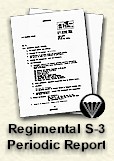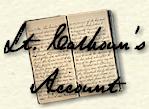
No. 16
231500 April 45
to
241500 April 45 |
Infantry: "H" Co., advancing on RCT right flank, received knee mortar
and MG fire vicinity (38.8-00.9) at 231715. Mortar fire was requested on
the area. "H" Co. patrols have been unable to contact the enemy in that
vicinity since that time. "G" Co., again attempting to take the high
ground to its front was unsuccessful as of 231800 and withdrew for the
night. During the
night, 34-24, 2 enemy were killed by "G" Co. and one by "I" Co.
attempting to infiltrate. A saber and blood were discovered in the vicinity of an "F" Co. booby
trap. Two platoons of "F" Company advancing to a position abreast of "D"
Co. discovered caves and recent
graves containing a total of 30 enemy dead. In the vicinity of
(40.5-97.0) "F" reported silencing one 20mm, one LMG, and 2 enemy KIA as
it advanced. "G" Co. supported by "I" Co. platoon on its left destroyed
2 enemy 50 Cal. MG's and killed 3 enemy vicinity (36.3-97.6). An "I" Co.
patrol killed 5 enemy in a cave vicinity (40.8-97.6). The cave contained
all types of enemy weapons. "G" Co was in a fire fight as the period
closed.
"RESULTS OF OPERATION: As the results of "F" Co.'s advance it is
apparent that our efforts are inflicting casualties previously
unreported. The continued pressure is forcing the enemy to bury his
casualties on the spot rather than evacuate them to the rear. Our front
lines, now more firmly consolidated, the 1st Bn. now are liable for the
left flank protection and action, and the more advantageous position of
supporting tanks and artillery, enhance our possibility of a more rapid
advance.
|
|
 About a mile separated the right flank of the 503d RCT and the barbed
wire enclosed fortress of the 185th
RCT. They had been forted up here when we arrived, and they would
remain in their fort until they were withdrawn from the island. In
between us were deep, wooded draws and
high ridges. The ridges were rough with high hills in many places. The
area was also more wooded. Although both our RCT and the 185th were
supposed to patrol
the area they were not noticeable early in the campaign and became
extinct as time passed, so the 503d took care of this area. Before the
2d Battalion relieved the 3d as the assault battalion, as already
stated, the 2d patrolled this rugged area. On one occasion
Captain Taylor
took his three rifle company commander and his S-3, 1st Lieutenant
William E. LaVanchure, south down
through a heavily wooded draw and up on the first ridge. We found signs
of enemy occupation, but they were gone. A few hundreds yards to the
east was a prominent hill. This was the hill which gave "G"
Company so many problems as they attempted to advance to protect our
flank. We probably went out a half mile or more, and I thought at the
time it was poor judgment for five officers to be out on a patrol which
should be done by a large combat patrol. I carried an 03-A3 Springfield
with scope, the company's sniper rifle, Taylor carried a Colt 45 pistol,
and the other three carried carbines. Fortunately the enemy had pulled
back up to the hill. About a mile separated the right flank of the 503d RCT and the barbed
wire enclosed fortress of the 185th
RCT. They had been forted up here when we arrived, and they would
remain in their fort until they were withdrawn from the island. In
between us were deep, wooded draws and
high ridges. The ridges were rough with high hills in many places. The
area was also more wooded. Although both our RCT and the 185th were
supposed to patrol
the area they were not noticeable early in the campaign and became
extinct as time passed, so the 503d took care of this area. Before the
2d Battalion relieved the 3d as the assault battalion, as already
stated, the 2d patrolled this rugged area. On one occasion
Captain Taylor
took his three rifle company commander and his S-3, 1st Lieutenant
William E. LaVanchure, south down
through a heavily wooded draw and up on the first ridge. We found signs
of enemy occupation, but they were gone. A few hundreds yards to the
east was a prominent hill. This was the hill which gave "G"
Company so many problems as they attempted to advance to protect our
flank. We probably went out a half mile or more, and I thought at the
time it was poor judgment for five officers to be out on a patrol which
should be done by a large combat patrol. I carried an 03-A3 Springfield
with scope, the company's sniper rifle, Taylor carried a Colt 45 pistol,
and the other three carried carbines. Fortunately the enemy had pulled
back up to the hill. |

We had
received bouncing Betty mines as evidenced in the Periodic Report above
which gives the account of an "F" company "booby trap." These were put
out just before dark at a time set by battalion on possible routes of
enemy infiltration. Then the next morning we took them up at dawn.
Despite repeated warnings some men in our RCT were killed by them due to
carelessness. They would forget and walk out of the perimeter.
The 24th was a
busy day for "F" Company. The "Chronological History of Company F" makes
a mistake here. We were not sitting around writing home and cleaning
weapons. That was almost a week off yet- and, even then, part of the
company was out on patrols every day, and one platoon was up in the
hills on outpost. Early the morning of the 24th "F" Company assaulted
the next ridge. This was our first support by 4.2 mortars. They had been
used to support other company attacks, but we had never seen them in
action. For sometime we had heard of these terrible weapons in Europe ,
of how when the shells exploded
raining phosphorus over the area the Germans jumped out of their
foxholes and ran. We knew that in supporting other companies of
our unit they were using both HE and WP, i.e., high explosive and white
phosphorus. The barrage supporting us was short, because of the
ammunition shortage, and we did not see any Japs jumping up and running.
They fired several WP shells last resulting in some smoke on the ridge,
but we still were not impressed. We moved out very rapidly in order to
take advantage of the shock of the HE shells and the smoke. Much to our
relief there were no mines and not much fire. The enemy did not seem to
be prepared. The most resistance was encountered on the north end of the
ridge where it dropped sharply and then rose rapidly back to a hill.
the 1st Platoon attacked this position. Bill McDonald was 1st scout for
the 1st squad who was leading the attack along the ridge and then down
into the deep swag. As Bill reached a
point near the bottom of the swag the enemy opened up with a machine gun
which was located in a bunker at the top of the hill. Bill
crumpled and fell into the brush along side the trail. All who saw him
fall were sure he was dead. The platoon halted and deployed seeking a
method to effectively attack this hard to get to position. As they were
pondering, suddenly, they heard hand grenades exploding and a
Thompson submachine gun firing. Rushing down to the swag and then up the
hill they found Bill McDonald in charge with several dead enemy
soldiers. Bill had not been hit by the machine gun's fire but had
crumpled and rolled over into the grass to fool the Japs. He crawled
up the hill to the rear of the bunker and threw in a grenade. The Japs
threw it back, and it exploded near Bill, but did not injure him.
Bill pulled the pin on another grenade, let the handle fly, and after it
fizzed a couple of seconds threw it into the rear opening of the bunker.
This one exploded before the Japs could react. Bill jumped down into the
ditch behind the bunker ,and firing through the rear opening, killed the
occupants. Bill was awarded the Silver Star Medal, and it was presented
to him by General MacArthur, 8 June 1945, at 40th Division Headquarters
in Silay.
The
information given here along with the fact that there were three dead
Japs_in the bunker comes from a news article printed in the Mt. Carmel,
Illinois "Daily Republican" Register dated June 24, 1945. After forming
the company into a defensive perimeter I reported to Captain Taylor over
on Tokaido Road. which was still on our right.
When I reached
Tokaido Road two M-4 tanks were sitting there behind a hill. They had
been a short distance further to the east in front of the hill where
they could survey the enemy country to their front and look for targets
of opportunity. Suddenly a high explosive round hit the slope plate of
the lead tank. This round was fired from a Jap dual purpose 75m gun.
Dual purpose means that this high velocity gun could be used as an anti
aircraft gun, or it could be used for ground targets. (Our S-3 was
convinced that it was a 90mm gun). This particular gun was well
concealed in a bunker further east and north of Tokaido Road. The
only damage to the tank was a black spot on the slope-plate where the
round exploded. We suspected there was quite an odor inside the tank,
but it was buttoned up so tightly that one would never know. I missed
the show, but when I got there, the two tightly buttoned-up tanks sat
there behind the hill in complete safety.
Captain Taylor
pointed out the big ridge to our left front, on the north side of the
road. It ran northeast to the southwest which put it at about a
forty-five degree angle to the road. Taylor told me that hill was
heavily fortified and was now "F" Company's next objective. As we
advanced on the left "D" Company would continue to advance on the right.
An, M-7, self-propelled 105mm howitzer from the canon company would be
up early the next morning to give direct fire support. He told me to get
with the platoon leader and see if we could pick out the bunker slits
with a 20 power telescope . If the M-7 could find them they could
destroy them.
We dug in for
the night and at the proper time put out our Bouncing Betties. The
incidence of attempted infiltrations decreased with the use of these
mines. Even so, occasionally at night one of the bombs exploded. Usually
the next morning we would find a lot of blood and a weapon or two. We
did sleep better knowing they were there. |